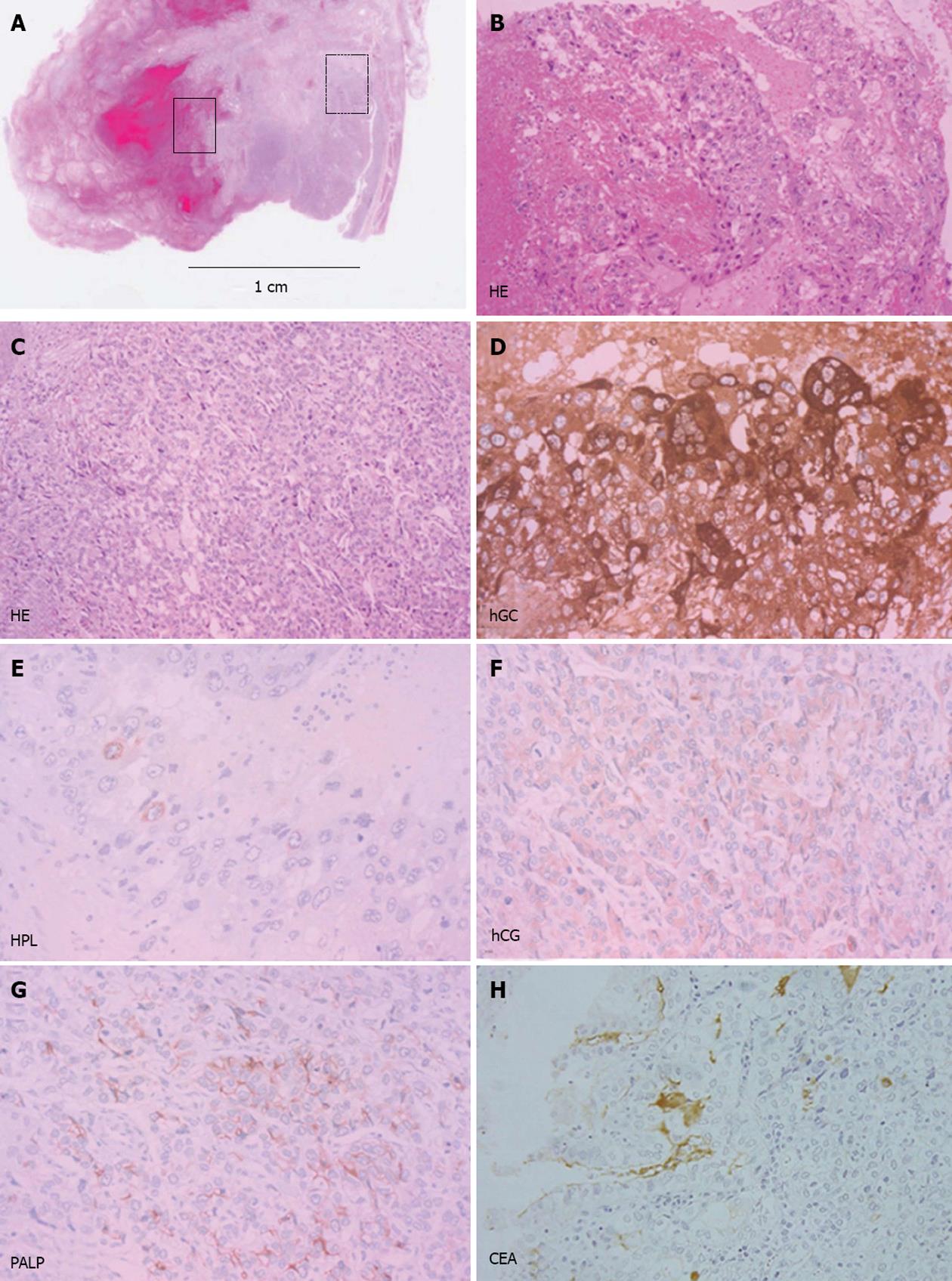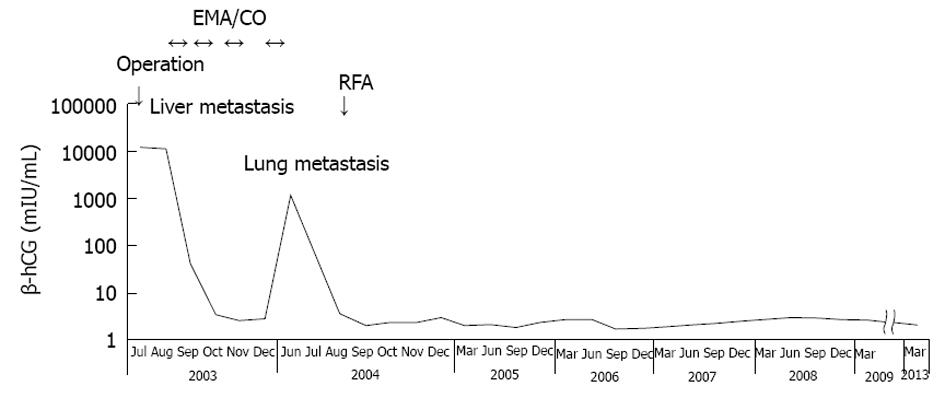Copyright
©2013 Baishideng Publishing Group Co.
World J Gastroenterol. Aug 21, 2013; 19(31): 5187-5194
Published online Aug 21, 2013. doi: 10.3748/wjg.v19.i31.5187
Published online Aug 21, 2013. doi: 10.3748/wjg.v19.i31.5187
Figure 1 Gross appearance of the resected specimen.
A: An elevated tumor with surface ulceration and hemorrhage was located in the fornix (arrow); B: On the cut surface of the specimen, there was a very large lobulated tumor, white to gray in color, with large areas of hemorrhage and necrosis (arrow).
Figure 2 Pathological findings (hematoxylin/eosin staining and immunohistochemical staining).
A: The tumor had two components, as indicated by small boxes with solid and dashed lines. Hematoxylin/eosin (HE) × 40; B: In the area marked by a solid line in panel A, unusual multinucleated giant cells in a characteristic dimorphic plexiform pattern associated with hemorrhage and necrosis were observed. HE × 100; C: Atypical mononucleated cells demonstrated a solid and sheet growth pattern in the area marked by a dashed line in panel A. HE × 100; D, E: Tumor cells were diffusely positive for β-human chorionic gonadotropin (hCG) and focally positive for human placental lactogen (HPL) in the area marked by a solid line in panel A. HE × 200; F, G: The tumor cells were positive for beta-human chorionic gonadotropin and placental alkaline phosphatase (PALP) in the area marked by a dashed line in panel A. HE × 200; H: Immunoreactivity was focally positive for carcinoembryonic antigen (CEA). HE × 100.
Figure 3 Tumor markers and chemotherapy.
Seven days after surgery, metastatic recurrence in the liver was diagnosed. After starting etoposide, methotrexate, actinomycin D, cyclophosphamide, and vincristine (EMA/CO), serum beta-human chorionic gonadotropin (β-hCG) concentrations decreased. After three cycles, serum β-hCG levels decreased markedly to almost within normal limits and clinically the tumors showed a complete response. Six months later, there was a sudden elevation in serum β-hCG levels with the emergence of multiple nodules in both lung fields. Metastatic recurrence in the lung was diagnosed and EMA/CO was restarted. After one cycle, most tumors, except for one nodule in the left lower lobe, disappeared concomitantly with declines in serum β-hCG levels. Computed tomography-guided radiofrequency ablation (RFA) was performed for the oligometastatic tumor. The patient has been alive with no evidence of disease for nine years after RFA.
Figure 4 Computed tomography images before and after chemotherapy.
A, B: Seven days after surgery, multiple low-density lesions were detected in the liver on abdominal computed tomography; C, D: After three cycles of etoposide, methotrexate, actinomycin D, cyclophosphamide, and vincristine, the tumors disappeared with a clinical complete response.
Figure 5 Overall survival with gonadal choriocarcinoma regimen and adenocarcinoma regimen.
The median survival of patients treated with gonadal choriocarcinoma regimens used as the first-line was 9.5 mo compared to 5.0 mo in patients treated with gastric carcinoma regimens. Although this difference was not statistically significant, treatment results showed a favorable prognosis with gonadal choriocarcinoma regimens (P = 0.1).
- Citation: Takahashi K, Tsukamoto S, Saito K, Ohkohchi N, Hirayama K. Complete response to multidisciplinary therapy in a patient with primary gastric choriocarcinoma. World J Gastroenterol 2013; 19(31): 5187-5194
- URL: https://www.wjgnet.com/1007-9327/full/v19/i31/5187.htm
- DOI: https://dx.doi.org/10.3748/wjg.v19.i31.5187













